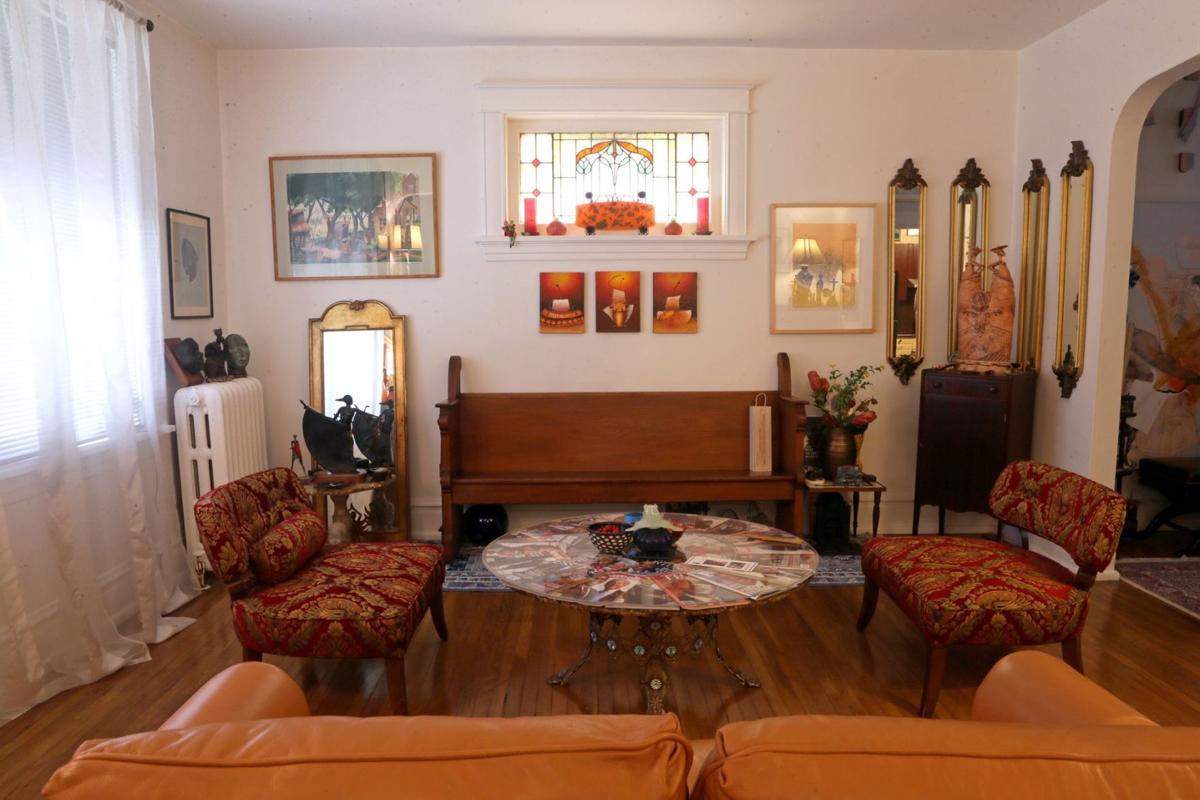
Collections of objects, such as wooden boxes, ceramic pots, wooden cutting boards, wire birdcages or butter molds—when carefully edited—can also be assembled into groups and presented like a work of art to transform a dead wall into a focal point. When choosing and placing art and collectibles for our own home, you can try these following tips from Jean Nayar on her book "The Happy Home Project".
 Tips on displaying art and collectibles
Tips on displaying art and collectiblesPhotographs gain stature and cohesion when surrounded with matching frames and hung as a collection. Edit your collections with a judicious eye, eliminating all but the pieces you really love. Rotating new pieces in and old ones out will allow your objects to continue to stimulate you and be free of clichés.
Art and accessories needn’t come from the same era or be of similar style to work together, but they do need a common thread, such as a color, material or an idea. In this way, the objects will capture attention and tell a story about the collector.
 A painting or print looks best when mounted so that the center of the piece is at eye level for an average-height person—about 66 inches from the floor. If you have several works of art mounted in this way, they’ll be linked by an invisible horizon line that will bring a sense of balance to the room.
A painting or print looks best when mounted so that the center of the piece is at eye level for an average-height person—about 66 inches from the floor. If you have several works of art mounted in this way, they’ll be linked by an invisible horizon line that will bring a sense of balance to the room.Give small works stature by surrounding them with large mats. Or mount them in proportionate frames in a group where they can be viewed from close proximity. Place a small painting on an easel on a table with other objects, or lean a midsize piece against the wall atop a mantel.
 Consult a lighting professional about placement if you want to use recessed lighting to highlight art. Some fixtures need to be placed 30 inches away from the art and spaced 24 inches apart to evenly wash the painting with light and prevent the scallops that appear from the spread of the light beams. But lighting technology continues to evolve, so a standard like this is subject to change. Usually, the lighting you use to illuminate the room is sufficient to highlight the art, so you don’t necessarily need special lighting unless you want to call attention to the art. Just be sure to keep high-quality art out of the direct line of the sun.
Consult a lighting professional about placement if you want to use recessed lighting to highlight art. Some fixtures need to be placed 30 inches away from the art and spaced 24 inches apart to evenly wash the painting with light and prevent the scallops that appear from the spread of the light beams. But lighting technology continues to evolve, so a standard like this is subject to change. Usually, the lighting you use to illuminate the room is sufficient to highlight the art, so you don’t necessarily need special lighting unless you want to call attention to the art. Just be sure to keep high-quality art out of the direct line of the sun.




0 comments:
Post a Comment